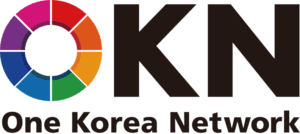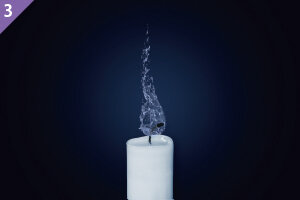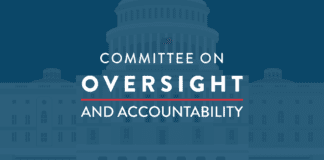This article is the third of the Moon Jae-in series. President Moon of South Korea has been touted as the premier human rights lawyer, the champion of the little people. His words aimed at the population flow, as smooth as honey, but his actions belie his words in all areas of governing. His minimum-wage edict resulted in the reduction of jobs for the young; his anti-nuclear energy initiative caused the cost of electricity to soar; his housing policies did not stabilize the rising cost; his employment numbers are the worst ever; and his gambit with the North Korean denuclearization has hit rock bottom. Still, he maintains his popularity (53% rating) mostly on the strength of keeping the Covid-19 pandemic under control. This Moon Jae-in series is intended to debunk the popular narrative.
As the saying goes, a man is known by the company he keeps. Moon is surrounded by the so-called “386 generation.” The numerical term came into being in the 1990s, and the “3” stands for their age, 30 something. The “8” signifies that they had gone to college in the 1980s. The “6” indicates that they were born in the 1960s. In terms of political leaning, the 386 generation is generally referred to as those who were actively involved in the student movement during the 1980s. The student movement mainly opposed the government, then run by ex-military generals. The university students all across the country organized groups on behalf of the democratic movement.
Following excerpts from Quest for Freedom, written by Kim Young-hwan, gives some light to the student movement at the time, along with the group called “Jusapa.” Often referred to as the godfather of Jusapa, Kim Young-hwan was at the forefront of the so-called student movement, or democratic movement, which was nothing more than a euphemism for a Kim Il-sung admiration society.
Kim Young-hwan writes:
I was the author of “GangCheol SeoShin, Letters by GangCheol, “which primarily dealt with juche thoughts, ergo, ju-sa. Juche thoughts have their foundation in the socialist system in North Korea, allegedly originated by Kim Il-sung. I first published the “Letters” when I was twenty-two, and it created quite a stir among student activists. This group of students were collectively called the “Jusapa.”
The book was a huge hit, and nobody anticipated the magnitude of the sensation it received. It was hailed as the “first-ever pamphlet to introduce and popularize juche thoughts and its theories in the history of the student movement.” This was when the acronym jusapa came to be and spread like wildfire. Others critiqued that the book opened a Pandora’s box called “North Korea,” which had been a forbidden topic for many years. THE LETTERS became a catalyst for activists on the left to talk about North Korea.
Many of us were most concerned about which “circle” or club we should sign up for, not the usual quest for meet-ups with co-eds. Choosing the right “circle” was important because it determined our future as activists.
To explain the state of activism at Seoul National University (SNU), there were open circles and those underground. Open circles dealt with ordinary hobby activities like mask dancing, theater, sports, reading, writing, chorus, and religion. The rest of the circles were outlawed by the government, and they maintained their activism underground. Actually, 80% of the open circles were no different from the underground ones, indicating the atmosphere of the campus at the time.
The leadership for the student movement was centered around the underground circles.
The majority of my classmates were participating in circle activities by their second year in school. Some people surmised that “70% of the new students entering SNU joined the circles and received an education.” Of course, a small number of people fell away from circles as years went on, but the participation level was quite high.
The student movement in other universities had similar structures, but Seoul National had more active underground circles with a keener interest in ideological studies and debates. Thus, the theories and direction of the movement originated from SNU.
We generally refer to the 1980s as the time of democratization movement, but I have doubts about such characterization. To be entirely accurate, I must say that we strongly favored socialist ideology rather than democracy. Of course, we were outraged about the Gwangju crisis, and directed our anger at the Chun Doo-hwan government and its military modus operandi and began the student movement, but the moment we joined the circle, we mostly studied historical materialism, Karl Marx economics, the history of Soviet revolution, and other socialist related materials. Enter the mid-1980s, juche ideology, anti-Americanism, and suryong theories were added. Accordingly, anyone who claims that he participated in pure democratization is not honest.
The open circle of Classics Study Group carried on with a curriculum consisting of Karl Marx’s economic theory, philosophy of dielectric materialism, the theory of revolution, and the more we studied, the more we became “socialist revolutionaries.” That was the open circle. The Under circle was entrenched in the mission of establishing a socialist government via the revolutionary class system, to put it simply. By junior year, many deemed themselves as a professional revolutionary and joined the labor movement.
NL meant National Liberation, a name we called ourselves to signify anti-imperialism struggles. PD (Proletarian Democracy) and CA (Constituent Assembly) were part of the same student movement, but they were more focused on the class struggles between workers and capitalists with an aim to install a socialist government. Especially the CA faction, they were the most overt revolutionaries who argued to abolish the old constitution and form a new one to establish a new republic.
NL came to be around 1985, 1986, and CA, and PD clarified its framework around June 1987 and through the presidential election process. NL seemed to have preceded CA and PD, but actually, it was the other way around. CA and PD adopted the principles from traditional Marxism and Leninism, the same framework that activists had used during the 1970s.
Notwithstanding the longer history of CA and PD, NL was able to capture the imagination of the young people by pushing the idea of anti-Americanism and Korean unification. The rally we organized in June 1987 was especially crucial in garnering wide support from the general public, not to mention the variety of open and underground circles. We formulated a slogan that was easy for the general public to understand—a constitutional amendment for a direct election system.
It was MT that brought the student movement together. MT organized an Under circle by the name of the Committee for Pursuing Democratization and formed a semi-open action-based circle called “Committee for Three-Min Campaign.” Three-Min stood for Minjok, Minju, Minjung, meaning the Korean race, democracy, and the people, respectively. Three-Min organized and led the occupation of the American Cultural Center in Seoul in May 1985. Seventy students from five universities, including SNU and Korea University, occupied the Center and performed a sit-in for four days. It caught international attention because it took place in the heart of Seoul at a time when the whole country was getting ready to host the 1988 Olympic Games.
The police were after one of the leaders, Park Jong-woon (SNU 81). The police didn’t know where he was hiding, so they arrested the younger Park Jong-chul (SNU 84) and tortured him to find out where Jong-woon was. The water torture proved to be too much for Jong-chul. He died. The police explained his death. “We just hit him once, and he keeled over and died.” His death triggered a public reaction in epic proportion, a fuse to touch off the explosion called the “Democratic Resistance of June 1987” at a time when the movement was in disarray.
As I said earlier, the government’s new policy on academic freedom threw everyone off and left them groping for new ideas to fight the authorities. Moreover, the leaders of the movement were being arrested left and right. This was when NL came on the scene. Its slogan was simple — “Let’s kick out American imperialism.” The NL movement caught fire because of Jong-chul’s death and the simplicity of the message.
100 students participate in the JUSAPA founding meeting at the SNU School of Natural Studies auditorium (Photo: John Cha).
As Danjae grew in size, we formed the Student Coalition for Saving the Nation in March 1986, the first “Jusapa student organization” and the first organization to introduce NLPDR (National Liberation People’s Democratic Revolution). About 100 students participated in the founding meeting held in the auditorium of SNU School of Natural Studies.
The theme of the occasion was, “One spark of fire burns the wilderness.” Mao Zedong’s old saying from the days of the Chinese revolution was about to become a reality in front of our eyes.
The NL movement edged closer toward a pro-North stance starting in the early 1990s. When my colleagues and I had searched for materials on juche ideology or North Korea, we had to rely on KCIA publications, but in the late 80s and early 90s, original North Korean material flooded the libraries, making us dizzy. The expansion of jusapa prompted the influx of materials via various routes—Kim Il-sung’s memoirs, North Korean fictions, a guide to juche ideology, memoirs of partisan commandoes, North Korean music sheets, and movie tapes, and so on. It was like someone had opened a floodgate.
Many groups of people listened to North Korean broadcasts and transcribed them and disseminated the material to university campuses, factories, and civic organizations. These groups were called the “BC team.” Police raids of university student associations yielded tons of BC material. Freshmen on campuses proudly pronounced, “I am a Jusapa,” and groups of students sang songs praising Kim Il-sung and Kim Jong-il. They were deemed as “activists with strong conviction.” North Korean terminologies and writing style were common during activist meetings and even in public. NL activists became teary-eyed when choirs sang North Korean songs imitating the North Korean singing style. Campuses across the country seemed to be competing to show their loyalty to the Kim regime by disseminating North Korean materials. That was the atmosphere at the time.
It has taken a while to explain the origin of “Jusapa,” but understanding its background is needed to describe Moon’s inner circle adequately. When Moon took his office at the Blue House, his first task was to appoint his staff, and his top staff turned out to be ex-Jusapa and other anti-state organizations. Some of those staff members will be described in the next installment.



